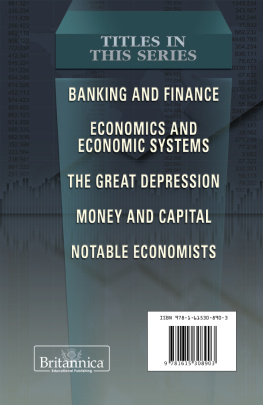
Published in 2021 by Cavendish Square Publishing, LLC
243 5th Avenue, Suite 136, New York, NY 10016
Copyright 2021 by Cavendish Square Publishing, LLC
First Edition
No part of this publication may be reproduced, stored in a retrieval system, or transmitted in any form or by any meanselectronic, mechanical, photocopying, recording, or otherwisewithout the prior permission of the copyright owner. Request for permission should be addressed to Permissions, Cavendish Square Publishing, 243 5th Avenue, Suite 136, New York, NY 10016. Tel (877) 980-4450; fax (877) 980-4454.
Website: cavendishsq.com
This publication represents the opinions and views of the author based on his or her personal experience, knowledge, and research. The information in this book serves as a general guide only. The author and publisher have used their best efforts in preparing this book and disclaim liability rising directly or indirectly from the use and application of this book.
Portions of this work were originally authored by Don Nardo and published as The Great Depression (American History). All new material this edition authored by Simon Pierce.
All websites were available and accurate when this book was sent to press.
Cataloging-in-Publication Data
Names: Pierce, Simon.
Title: The Great Depression / Simon Pierce.
Description: New York: Cavendish Square, 2021. | Series: Turning points | Includes index.
Identifiers: ISBN 9781502657657 (pbk.) | ISBN 9781502657664 (library bound) | ISBN
9781502657671 (ebook)
Subjects: LCSH: Depressions--1929--United States--Juvenile literature. | New Deal,
1933-1939--Juvenile literature. | United States--History--1933-1945-Juvenile literature. |
United States--History-1919-1933--Juvenile literature. | United States--Economic conditions-
1918-1945--Juvenile literature.
Classification: LCC E806.P54 2021 | DDC 330.9730916--dc23
Editor: Jennifer Lombardo
Copy Editor: Michelle Denton
Designer: Deanna Paternostro
Some of the images in this book illustrate individuals who are models. The depictions do not imply actual situations or events.
CPSIA compliance information: Batch #CS20CSQ: For further information contact Cavendish Square Publishing LLC, New York,
New York at 1-877-980-4450.
Printed in the United States of America

TABLE OF CONTENTS

In September 2008, a huge stock market dip occurred. This was one of the most visible signs of the economic recession, although it had been brewing for more than a year.
INTRODUCTION
A WORLDWIDE STRUGGLE
M ost countries around the world have a partially or entirely capitalist economy. In this system, goods and services are sold by individuals or private companies rather than controlled by the government. To keep a capitalist economy working, people must buy things. This gives businesses money to pay their workers, who can then go out and buy things from other companies, and the cycle continues. If people stop buying things or reduce the amount they buy, the system slows down and eventually collapses.
All capitalist economies have experienced this boom-bust cycle numerous times. One of the most recent American bust periods, which has been termed the Great Recession, occurred between 2007 and 2009. During this financial crisis, hundreds of thousands of people lost their jobs, millions of people lost money, and nearly everyone was unhappy with the state of the economy. Although economists declared the recession over in 2009, its effects were felt for years. Many people have predicted that another recession will occur in the future, in part because of the loss of confidence in businesses that occurred during the last recession.
Although recessions are difficult for people to endure, they are less severe than economic depressions. Part of the reason why the 2007 economic collapse was a recession rather than a depression was that, as government officials saw signs that it was coming, they did their best to prepare for it. Because of this, the effects of a total collapse were avoided, and though the financial impact was still large, it could have been much worse. The country was able to recover relatively quickly. The Great Depression, on the other hand, was a crippling disaster not only because of the initial economic failure but also because it took about a decadefrom 1929 to 1939 for the government to repair the market.
A Global Disaster
The Great Depression affected multiple countries, not just the United States. Because the worlds economies have become increasingly interconnected over the years, such a disaster often has ripple effects. When a country has to spend money to take care of its own citizens, it has less money for international trade, causing economic troubles in countries that suddenly have difficulty finding an overseas market for their goods and services. In fact, part of the reason why the Great Depression lasted as long as it did was because many countries raised tariffs, or taxes, on imported goods in an effort to encourage their citizens to buy things that were made in their own country. The intention was to improve the economy of the country by keeping money flowing into domestic businesses rather than ones overseas, but since most countries adopted such policies, they all suffered from decreased international trade.
In fact, one of the most devastating consequences of the Great Depression was the rise of the Nazi Party and the Holocaust in Germany. Jews were targeted by the government and largely blamed for the countrys misfortunes. Many German citizens were scared and struggling, so they were happy to have someone to blame and elected a leaderAdolf Hitlerwho promised to do something about it. When German Jews started to experience discrimination, some tried to leave the country. However, the United States and other countries had tightened immigration rules in response to the Great Depression. Additionally, one of the policies the Nazis enacted before establishing concentration camps was that Jews who wanted to leave the country had to leave behind all their money and possessions, which were seen as the property of Germany. The United States Holocaust Memorial Museum explained:

Germany was already dealing with economic problems when the Great Depression hit. These economic troubles helped Adolf Hitler ( shown here ) gain power with promises to improve the German economy.
With this combination of domestic and foreign policies in place, many Jews had nowhere to go and ended up stuck in the country when the Nazis started sending them to concentration camps.
The Scope of the Crisis
Though the decade-long Great Depression was a terrible economic disaster, the United States was eventually able to do more than just recover from it. The nation emerged after World War II, which it fought in from 1941 to 1945, as the richest country in the world, and it has remained at or near the top of global wealth rankings ever since. For generations, many Americans have known nothing but economic opportunity, prosperity, and a high standard of living. For the most part, even the nations poorest citizens dont have to live through conditions nearly as desperate as those faced by more than 10 million Americans in the midst of the Great Depression.
















